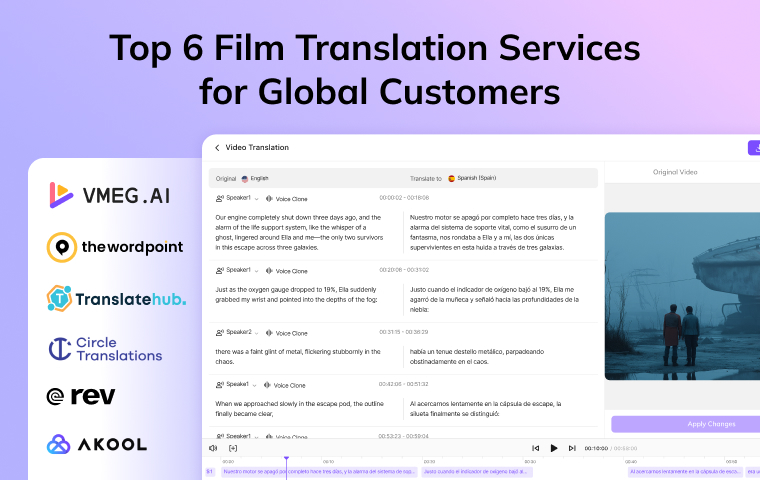
Films have been the cultural media and symbol of today's globalization age, connecting people across borders. And film translation is a crucial factor for cultural communication and commercial success in foreign markets.
Accurate, emotionally resonant film translation can make or break how a movie is received abroad. That’s why production companies and distributors are increasingly investing in professional film translation services to ensure their work reaches and moves global audiences.
In this guide, we’ll explore the top-tier film translation services, walk through the translation process, and compare subtitles and dubbing to help you choose the right service.
What is a Top Film Translation Service: Key Criteria
Choosing the right translation partner is the first and most important step toward ensuring quality and authenticity. Here are the key criteria that we define as a top film translation service:
- Quality vs. Speed
Top providers maintain high-level quality control, regardless of whether it involves human translation or AI, through proofreading, editing, and review processes to ensure consistency and accuracy. Meanwhile, speed is an attractive factor for customers. Balance quality and speed when measuring what you need.
- Linguistic and Cultural
A great translation deeply understands both the language and cultural context of the target market, including idioms, humor, slang, and social norms. This ensures cultural nuance and emotional resonance.
- Professional Translators
A company that employs human translators, the translation is best carried out by native speakers of the target language to ensure fluency, naturalness, and audience familiarity. Translators must be familiar with how dialogue fits into cinematic storytelling, like timing and the production process.
- Technical Capabilities
From syncing subtitles and soundtracks to AI dubbing, technical proficiency is essential. The best companies can manage timecode synchronization, format conversions, and deliver files ready for post-production.
- User Experience
Experience matters. Past projects, case studies, and client feedback can tell you a lot about a company’s reliability and professionalism.
Top 6 Film Translation Services
VMEG AI
VMEG AI is a comprehensive AI video localization platform that helps you translate movies, dub, and subtitle. Its advanced voice-cloning and lip-sync technology adapts videos into more than 170 languages, making your video look and sound like it was produced natively for the target audience.
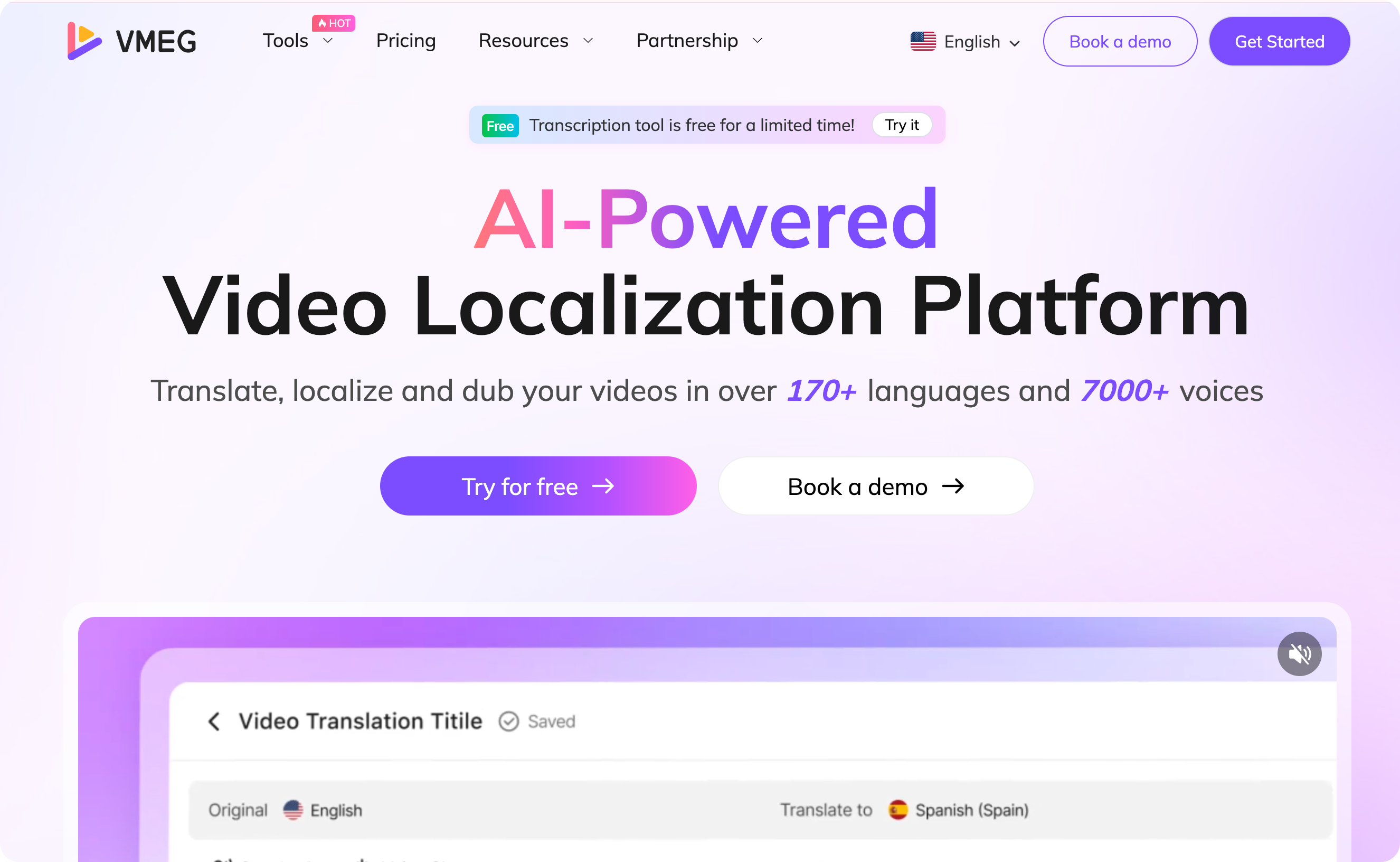
Key Features for Movie Translation
- AI Movie Translation: supports 170+ languages and dialects.
- Voice Cloning & Dubbing: choose from 7,000+ AI voices or clone voices, then sync them to video accurately.
- Lip-Sync Alignment: dubbed voices are well-synced with the mouth movements of the original video.
- Subtitle Translation: automatically generate and translate subtitles.
- Flexibility: support for major video formats (MP4, MOV, WEBM, etc.), 4K resolution, and embedded subtitles, or separate SRTs exportation.
- Simple Workflow: upload video, select language & voice, review/edit, and export localized version.
Pros
- Broad language and voice support, strong for global reach.
- Translates movies rapidly without sacrificing too much quality compared to traditional dubbing/subtitling workflows.
- Integrated lip-sync and voice-cloning make the dubbed version feel more native and professional.
Cons
- As with many AI-localization tools, some manual review may still be required — it might not fully replace human translation/localization in high-stakes film markets.
- AI-generated voices, while natural, may still lack the expressiveness of professional human dubbing.
Cost: VMEG AI offers both free trial access and paid plans. Pricing starts from $15/month (paid annually).
Best For: marketing videos, films, or social media projects — large-scale studio releases might still prefer a hybrid (AI + human) review.
The Word Point
TheWordPoint is a multilingual translation and localization agency that offers film and video-related services, such as script translation and video localization. It focuses on human translation, emphasising native translators, cultural nuance, and fast turnaround.
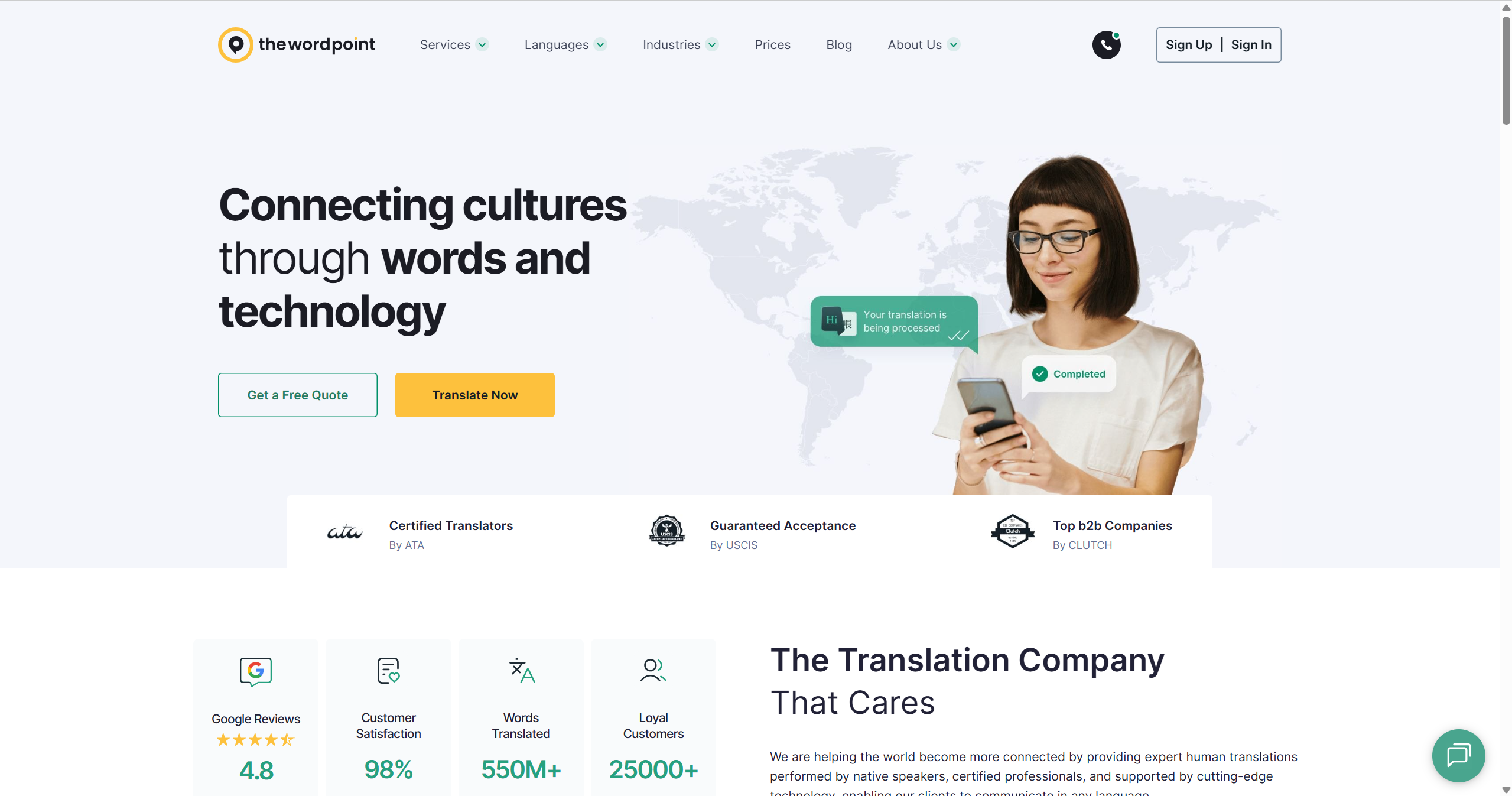
Key Features
- Film Translation: film script translation for movies, documentaries, and TV series.
- Video & Multimedia Localization: handle video translation in the aspects of subtitles, transcription, and voice-over services. Also translate texts and images.
- Language Support & Native Translators: provide top language experts for 80+ languages.
- Speed: offer relatively speedy delivery in many cases (some clients got translations within hours).
Pros
- Accurate translations, attention to cultural nuance, and strong client satisfaction.
- Translation by native speakers and cultural adaptation, rather than purely machine-based.
Cons
- Not ready for dubbing workflows.
- Fastest deliveries are for shorter content; large or complex multimedia may require more time or cost.
- The quality may depend on how much context/documentation the client supplies.
Cost: follow a per-word pricing model for standard translations. You need to input the source & target languages, industry, and words to calculate costs.
Best For: projects that need a human and certified translation.
TranslateHub
TranslateHub is a professional translation & localization agency that offers services in 50 + languages and claims to cover audio-visual content such as subtitles. It combines native-speaking translators with localization and can handle time-sensitive multilingual projects.
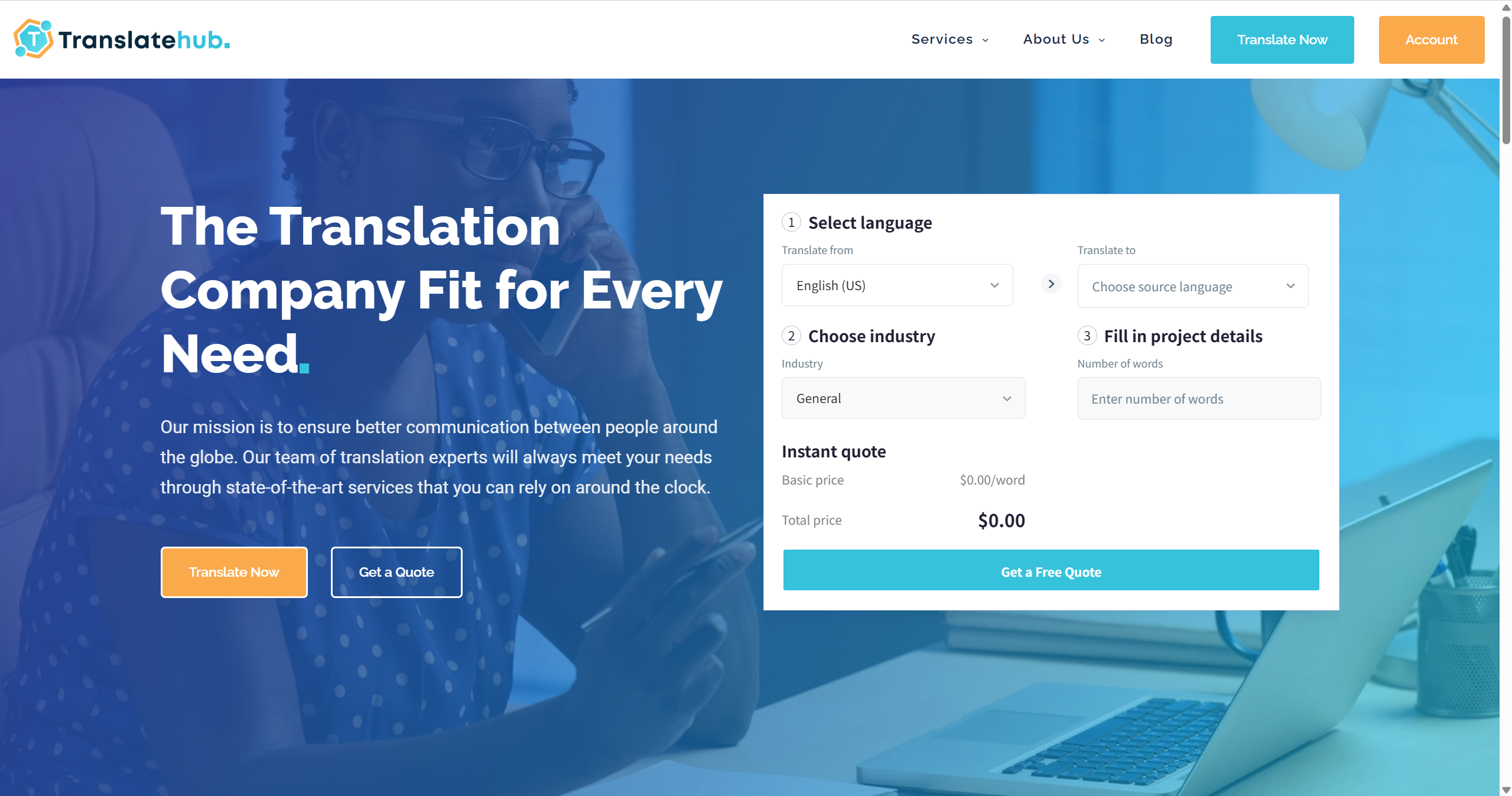
Key Features
- Subtitling: translate most videos and films via native translators in 100+ countries and 50+ languages.
- Certified human translators: native-speakers with years of experience and quality assurance.
Pros
- Strong human translator base and native‐speaker network: good for linguistic & cultural fidelity.
- They offer services 24/7 and claim a quick turnaround, which helps with speed.
Cons
- Lack of film-style dubbing or full lip-sync services means that if you need that, you may need to ask or supplement.
- If speed is the priority, the human-based model may cost more or take longer than AI-heavy alternatives.
Cost: you need to contact them for details based on your needs.
Best For: those who need high-quality translation/localization rather than speed and low cost.
Circle Translations
Circle Translations is a full-service localization agency that offers film translation and subtitling / dubbing services tailored for global distribution. It emphasises human-led translation workflows with cultural nuance, native translators, and rigorous quality control.
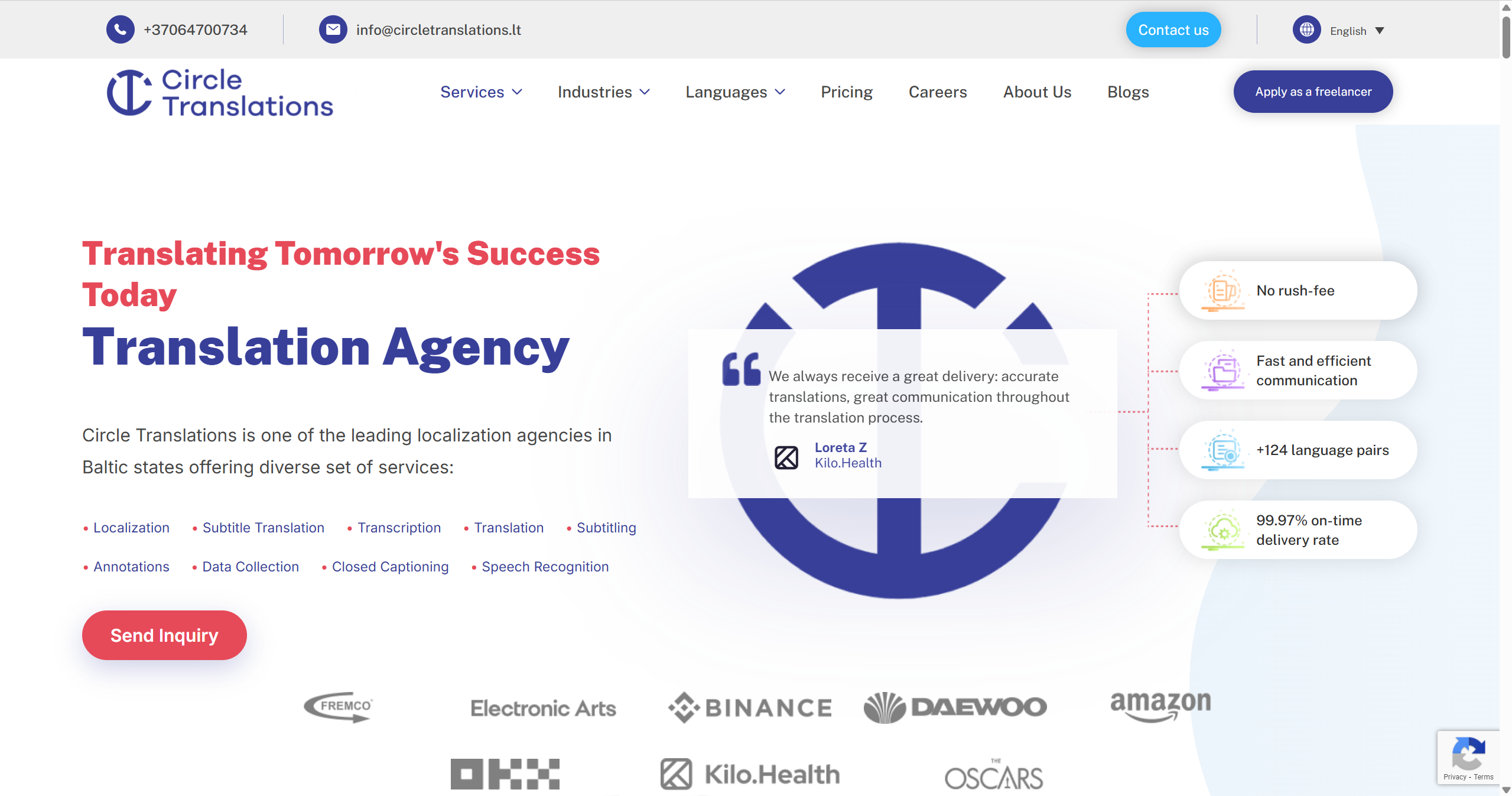
Key Features
- Film Translation Services: translate movies and videos, including subtitling, dubbing, or voice-over.
- Localization: beyond just subtitles, they support full localisation — linguistic, cultural, technical adaptation into target markets.
- Wide language support: support 120+ languages, catering to broad international markets.
- Speed: emphasise on-time delivery, good quality, and reasonable pricing.
- Full workflow: translate, edit, localize, and ready to post.
Pros
- Highlight native linguists, cultural adaptation, and localisation.
- Full services that cover most of the film localisation process.
Cons
- Full dubbing and localisation pricing is less transparent compared to subtitling rates by word.
- Large-scale projects with many languages may cost time, compared to AI-driven translation and lip-sync dubbing.
Cost: starting at €0.05 per word with no editing, revisions, or more. Business costs €0.08 - 0.13 per word, including native translator, multiple revisions, and publication-ready subtitles.
Best For: independent filmmakers or studios who need human-led translation of films, web series, or videos into multiple languages while retaining cultural nuances.
Rev
Rev is a well-known transcription and captioning company that also offers human-translated subtitles in many languages. Its standout feature is the combination of fluent human translators and fast speed for subtitles of English-source videos.
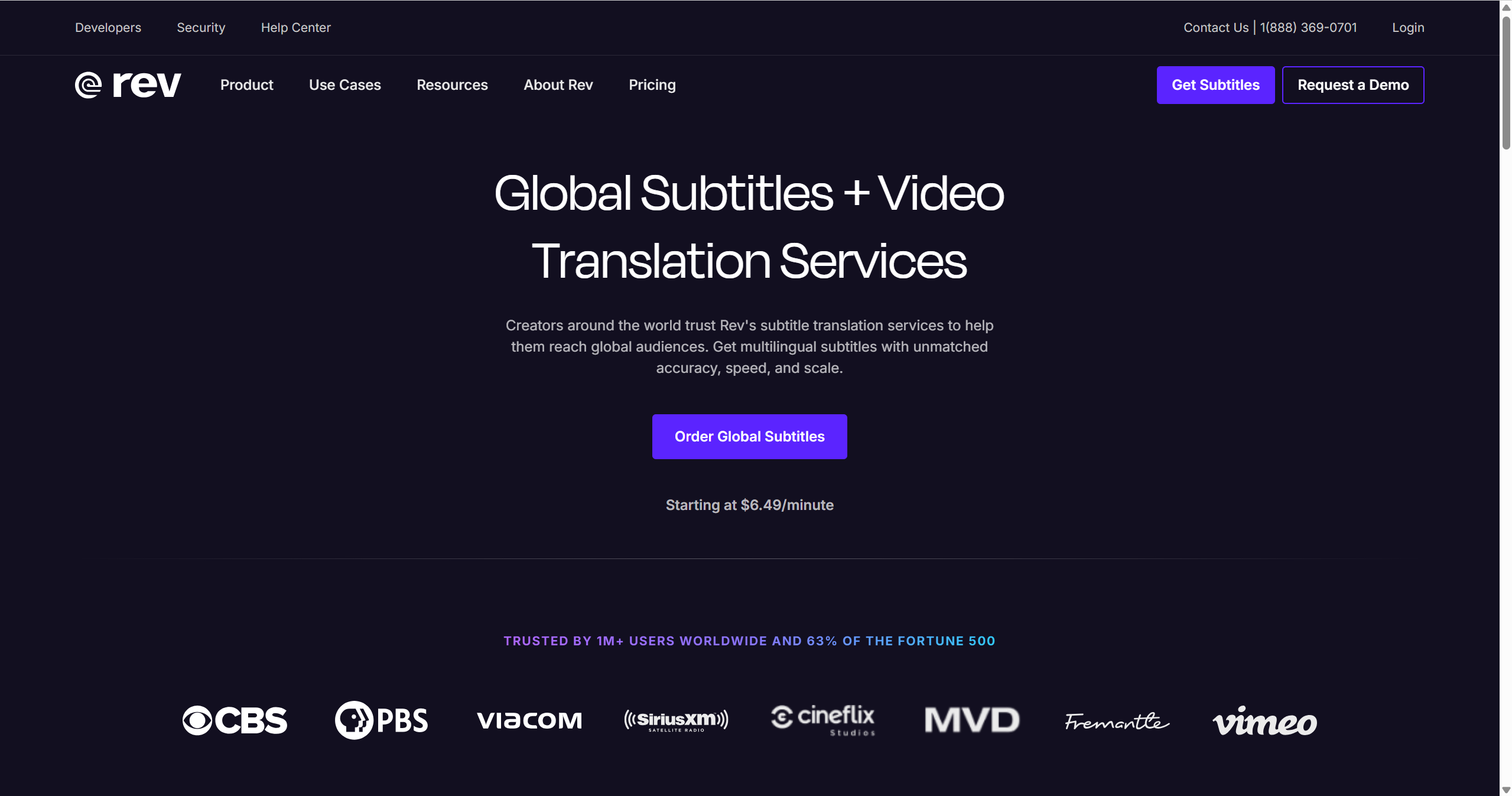
Key Features
- Human-translated global subtitles: English-source videos can be subtitled into 17+ target languages by fluent speakers.
- Rapid speed for shorter videos: a typical delivery is within 48 hours or less for standard jobs.
- Flexibility: output in many subtitle formats, burned-in video.
- Simple: ability to upload your video, attach an existing caption file, edit timing and speaker labels, burn-in subtitles, etc.
Pros
- High accuracy for human subtitles when the audio is clear.
- Extensive format support makes it easy to integrate into film/video workflows.
Cons
- Only translate from English sources into other languages.
- Dubbing or full voice-over by native voice actors is not provided.
Cost: free for 45 minutes of AI transcription per month. Basic is $9.99/month (billed annually). Pro is $20.99/month (billed annually) with human captions.
Best For: film or video projects that are English-language sources, requiring transcriptions or captions.
AKOOL
AKOOL is an AI video suite that lets you translate videos into dozens of languages with added lip-sync, voice cloning, and subtitle support. It’s pitched as a rapid localization tool to help you distribute video content globally. For filmmakers looking to turn a movie into localized content, its key characteristic is speed and automation.
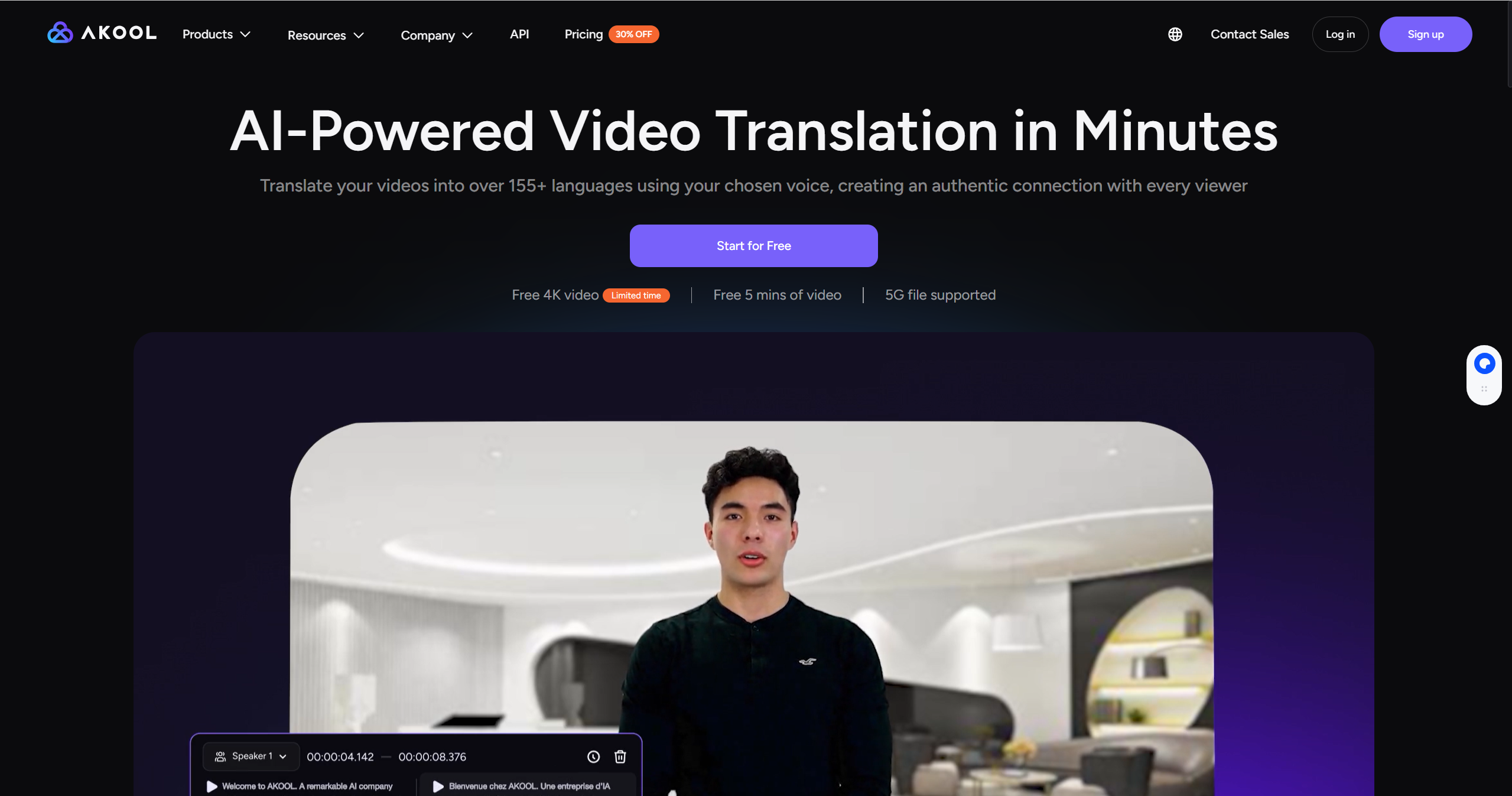
Key Features
- Video Translation: with support for 155+ languages and automated lip-sync/voice cloning, you can get many localized versions quickly.
- Voice cloning & AI voice options: so you can select a voice (or clone the original) for the translated version.
- Subtitle support for SRT/ASS files: you can upload your own subtitle files for precise synchronization.
- AI features: like background music removal, dynamic adjustment of video length according to speech speed — helpful for localization.
- Flexibility: support common video formats (MP4, MOV, AVI) and handles large files.
Pros
- Strong technical capabilities, including wide language support, automated lip-sync/voice cloning, subtitle upload, large files, etc.
- Free tier/trial allows you to test the tool.
Cons
- Videos with multiple speakers or heavy background noise may not yield optimal results.
- Some user reviews note unclear costs for long-form content.
Cost: 5-minute video to test for free; Paid plans start from $21/month (billed annually).
Best For: good for short films, marketing/e-learning videos, and localized content at scale. It saves cost and time vs hiring full dubbing teams.
What is the Process of Film Translation?
A traditional and high-quality translation project usually follows these steps:
- Content Evaluation – The provider reviews the film and gives a cost estimate.
- Transcription – All spoken content is transcribed and aligned with time codes.
- Translation and Localization – Native translators translate and culturally adapt the content.
- Editing and Quality Review – A second translator or editor ensures accuracy and tone consistency.
- Subtitling or Dubbing – Subtitles are formatted and synced, or dubbing is recorded.
- Final Delivery – The completed subtitle or dubbed file is delivered in the requested format.
AI-powered translation processes are automatic:
- Upload a video or film.
- Confirm settings that suit your needs, including source/target languages, speakers, dubbing or voice-cloing needs, and more.
- View the generated translation version and edit manually (accuracy, styles, etc.).
- Choose a format to export.
Subtitles vs. Dubbing: Which Should You Choose?
Considering subtitles or dubbing? Both subtitles and dubbing have unique advantages and challenges. The best choice depends on your target market, audience preferences, and budget.
Subtitles | Dubbing | |
Advantages |
|
|
Drawbacks |
|
|
FAQs
Can ChatGPT translate a movie?
ChatGPT can help translate texts like short scripts or dialogues that need manual reviews, but it’s not designed for full movie translation with dubbing, timing, or cultural adaptation.
How much should I charge for a 1000-word translation?
Professional film translation typically costs between $50–$130 per 1,000 words, depending on language, complexity, and service quality.
How much do translation services usually cost?
Film translation services generally range from $0.05–$0.13 per word or $15–$25 per minute of video, depending on whether you use AI or human translators.
How long does the process take?
Depending on complexity, a full-length feature film (including transcription, translation, review, and production) usually takes a few weeks.
Conclusion
Professional film translation preserves artistic integrity, adapts cultural nuances, expands global reach, and prevents costly miscommunication—all essential for a film’s international success.
You can choose a translation agency and an automatic AI tool, based on the service that you need (subtitling, dubbing, on-screen text localization, or script translation).
You can choose a translation agency and an automatic AI tool, based on the service that you need (subtitling, dubbing, on-screen text localization, or script translation).
Also, considering the budget and time period, since human translation and AI have totally different performances. Review the top film translation services that we chose for you, and get the one that most suits your needs.
Try AI Film Translation
Professional AI film translation preserves emotion, cultural nuance, and storytelling authenticity.
